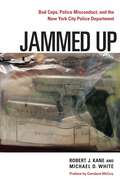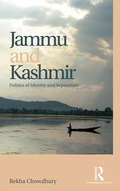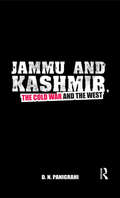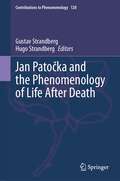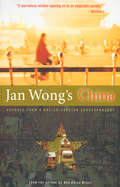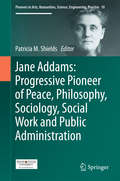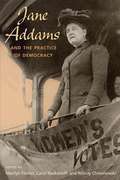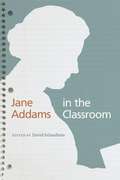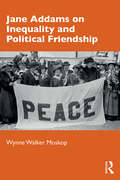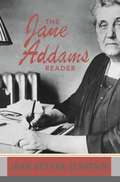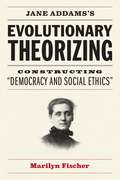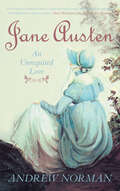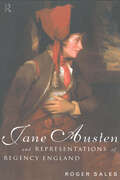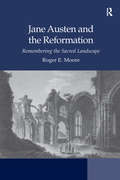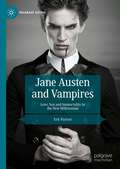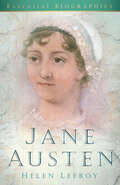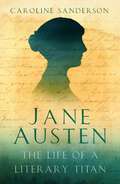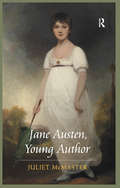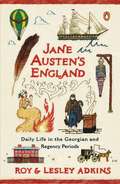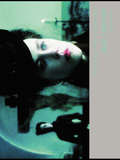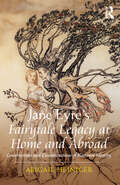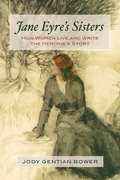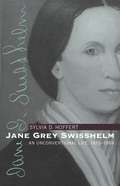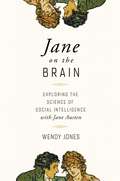- Table View
- List View
Jammed Up: Bad Cops, Police Misconduct, and the New York City Police Department
by Robert J. Kane Michael D. WhiteDrugs, bribes, falsifying evidence, unjustified force and kickbacks:there are many opportunities for cops to act like criminals. Jammed Up is the definitive study of the nature and causes of police misconduct. While police departments are notoriously protective of their own—especially personnel and disciplinary information—Michael White and Robert Kane gained unprecedented, complete access to the confidential files of NYPD officers who committed serious offenses, examining the cases of more than 1,500 NYPD officers over a twenty year period that includes a fairly complete cycle of scandal and reform, in the largest, most visible police department in the United States. They explore both the factors that predict officer misconduct, and the police department’s responsesto that misconduct, providing a comprehensive framework for understanding the issues. The conclusions they draw are important not just for what they can tell us about the NYPD but for how we are to understand the very nature of police misconduct. ACTUAL MISCONDUCT CASES»» An off-duty officer driving his private vehicle stops at a convenience store on Long Island, after having just worked a 10 hour shift in Brooklyn, to steal a six pack of beer at gun point. Is this police misconduct?»» A police officer is disciplined no less than six times in three years for failing to comply with administrative standards and is finally dismissed from employment for losing his NYPD shield (badge). Is this police misconduct?»» An officer was fired for abusing his sick time, but then further investigation showed that the officer was found not guilty in a criminal trial during which he was accused of using his position as a police officer to protect drug and prostitution enterprises. Which is the example of police misconduct?
Jammu and Kashmir: Politics of identity and separatism (Sage Series On Politics In Indian States Ser.)
by Rekha ChowdharyThis book provides a comprehensive and up-to-date analysis of the complex conflict situation in Kashmir. Through an internal perspective, it charts the shift in the Kashmiri response towards the Centre and offers a detailed examination of the background in which separatist politics took roots in Kashmir, and the way it changed its nature in the militancy and post-militancy period. The volume shows how separatism and armed militancy, as manifest in the Valley in the late 1980s, (though augmented by external factors) have been internal responses to the changing nature of Kashmiri identity politics. It explores how the ideas central to Indian nationalist politics — especially democracy and secularism — echoed in Kashmir and were instrumental in dismantling the feudal structure and negotiating an autonomous space within the framework of asymmetrical federalism. Seamlessly blending facts and incisive analyses, this book raises new questions about the nature of conflict and contestation in the region. It will be of great interest to researchers and scholars of Indian politics, especially on Jammu and Kashmir, and sociology, as well as government bodies, think tanks and the interested general reader.
Jammu and Kashmir, the Cold War and the West
by D N PanigrahiThis book re-examines the multifaceted reality of the Kashmir problem. The state of Jammu and Kashmir had acceded to India soon after India’s partition. Pakistan laid claim to it waged wars with India to wrest it. The various decisions taken by the USA and Britain in conjunction with India and Pakistan as to how Kashmir should be governed are discussed. Studying the spread of communism, the book makes extensive use of primary resources available in India and the UK. The principal object of the author is to locate conflict in Kashmir within the international politics of the time, during the Cold War, and especially in the context of India’s relationship with the UK. The narratives of the discourse throw light on the varied and salient features of the problem. These have been enriched by an in-depth analysis based on the writings, notes and correspondence of distinguished British and Indian politicians and statesmen. The author has also consulted public documents on US foreign relations as well as other studies. This study explores myths about the Kashmir problem, reinforcing known and unknown truths.
Jan Patočka and the Phenomenology of Life After Death (Contributions to Phenomenology #128)
by Gustav Strandberg Hugo StrandbergThis volume contains for the first time in English, Jan Patočka’s seminal essay “The Phenomenology of Afterlife”, as well as contributions surrounding and analyzing this text. In his essay, Patočka reflects on our relation to the dead and on how the departure of a loved one affects our continued existence. The premise of Patočka’s investigation is that our existence always takes place by and through an originary and reciprocal “being for others”.The contributors in the volume extend the field of inquiry into the wider phenomenological and post-phenomenological discussion of death by being cognizant of how works of literature can broaden our understanding of the care of death, grief, forgiveness and non-reciprocal love. Also included are reflections on issues of philosophical anthropology, community, collective memory, and the ecstatic nature of life – issues that can all be related back to Patočka’s initial reflections, but which nonetheless radiate into a myriad of directions. This volume appeals to students and researchers in the field.
Jan Wong's China
by Jan WongAs the fiftieth anniversary of the People's Republic of China approaches on October 1, 1999, Jan Wong reflects on her body of work as a foreign correspondent there. Despite the fact that everything is changing, she discovers that not much really changes, and what she wrote several years ago about love, work and living still holds, as do the conflicts over who rules, who survives, and who gets the bigger slice of Peking Duck.From a peasant tax revolt through the new consumerism (ads on television!) to the closeted world of Chinese gays, Jan Wong's China is a highly personal account of a country in transition. Its perspective is shaped by the author's six-year reporting stint, her life in Beijing in the '70s as a student and a Maoist, and her return visit to China in the spring of 1999.Employing humour and behind-the-scenes detail, Jan Wong brilliantly weaves her adventures into a rich journalistic tapestry.From the Hardcover edition.
Jane Addams: Progressive Pioneer of Peace, Philosophy, Sociology, Social Work and Public Administration (Pioneers in Arts, Humanities, Science, Engineering, Practice #10)
by Patricia M. ShieldsThis book examines the life and works of Jane Addams who was awarded the Nobel Peace Prize (1931). Addams led an international women's peace movement and is noted for spearheading a first-of-its-kind international conference of women at The Hague during World War I. She helped to found the Women's International League of Peace and Freedom. She was also a prophetic peace theorist whose ideas were dismissed by her contemporaries. Her critics conflated her activism and ideas with attempts to undermine the war effort. Perhaps more important, her credibility was challenged by sexist views characterizing her as a “silly” old woman. Her omission as a pioneering, feminist, peace theorist is a contemporary problem. This book recovers and reintegrates Addams and her concept of “positive peace,” which has relevancy for UN peacekeeping operations and community policing. Addams began her public life as a leader of the U.S. progressive era (1890 - 1920) social reform movement. She combined theory and action through her settlement work in the, often contentious, immigrant communities of Chicago. These experiences were the springboard for her innovative theories of democracy and peace, which she advanced through extensive public speaking engagements, 11 books and hundreds of articles. While this book focuses on Addams as peace theorist and activist it also shows how her eclectic interests and feminine standpoint led to pioneering efforts in American pragmatism, sociology, public administration and social work. Each field, which traces its origin to this period, is actively recovering Addams’ contributions.
Jane Addams and Hull House (Cornerstones of Freedom)
by Deborah KentA biography of the social worker who defended the oppressed, promoted education for the poor, worked for world peace, and founded Hull Houses, a settlement house in the industrial slums of Chicago.
Jane Addams and the Practice of Democracy
by Carol Nackenoff Wendy Chmielewski Marilyn FischerUsing a rich array of newly available sources and contemporary methodologies from many disciplines, the ten original essays in this volume give a fresh appraisal of Addams as a theorist and practitioner of democracy. In an increasingly interdependent world, Addams's life work offers resources for activists, scholars, policy makers, and theorists alike. This volume demonstrates how scholars continue to interpret Addams as a model for transcending disciplinary boundaries, generating theory out of concrete experience, and keeping theory and practice in close and fruitful dialogue. Contributors are Harriet Hyman Alonso, Victoria Bissell Brown, Wendy Chmielewski, Marilyn Fischer, Shannon Jackson, Louise W. Knight, Carol Nackenoff, Karen Pastorello, Wendy Sarvasay, Charlene Haddock Seigfried, and Camilla Stivers.
Jane Addams in the Classroom
by David SchaafsmaOnce intent on being good to people, Jane Addams later dedicated herself to the idea of being good with people, establishing mutually-responsive and reciprocal relationships with those she served at Hull House. The essays in Jane Addams in the Classroom explore how Addams's life, work, and philosophy provide invaluable lessons for teachers seeking connection with their students. Balancing theoretical and practical considerations, the collection examines Addams's emphasis on listening to and learning from those around her and encourages contemporary educators to connect with students through innovative projects and teaching methods. In the first essays, Addams scholars lay out how her narratives drew on experience, history, and story to explicate theories she intended as guides to practice. Six teacher-scholars then establish Addams's ongoing relevance by connecting her principles to exciting events in their own classrooms. An examination of the Jane Addams Children's Book Award and a fictional essay on Addams's work and ideas round out the volume. Accessible and wide-ranging, Jane Addams in the Classroom offers inspiration for educators while adding to the ongoing reconsideration of Addams's contributions to American thought.
Jane Addams on Inequality and Political Friendship
by Wynne Walker MoskopIn this book, Wynne Walker Moskop addresses the practical and theoretical problem of how unequal political friendships evolve toward arrangements the parties consider reciprocal and just, a problem neglected by scholars of democracy who associate reciprocity and justice only with equal parties. Jane Addams insisted that Hull House was not a charity with philanthropic aspirations; rather it had to bring “two classes” to a shared purpose and more egalitarian relation. The problem was, and still is, how? Drawing on several bodies of scholarship—including Addams’s writings, secondary works about her collaborations, literature on Aristotelian political friendship, and feminist scholarship on the global migration of care workers—Moskop shows the importance of Addams’s practices to the continuing relevance of unequal economic relations for shaping political friendship. Contributing to a lively conversation about Addams’s work as a pragmatist thinker and social reformer that began three decades ago, Jane Addams on Inequality and Political Friendship is an invaluable resource to students of democratic theory, feminist political theory and philosophy, and American pragmatism. It illuminates the importance of overlooked conditions for friendship and justice in unequal relations, given people’s ongoing subordination because of race, class, gender, and citizenship status in the U.S. and transnationally.
The Jane Addams Reader
by Jean Bethke ElshtainJane Addams was a prolific and elegant writer. Her twelve books consist largely of published essays, but to appreciate her life work one must also read her previously uncollected speeches and editorials. This artfully compiled collection begins with Addams's youthful Junior Class Oration on women as "Breadgivers," features thoughtful examinations of topics as diverse as "Tolstoy and Gandhi" and "The Public School and the Immigrant Child," and even includes popular essays on "The Subtle Problems of Charity," from The Atlantic Monthly, and "Need a Woman Over Fifty Feel Old?" from Ladies' Home Journal. Along with the writings themselves, Elshtain's insightful commentary offers powerful evidence of Addams's remarkable ability to frame social problems in an ethical context, her unwillingness to succumb to ideological dogma, her political courage, and her lifelong devotion to civic and moral life.
Jane Addams's Evolutionary Theorizing: Constructing “Democracy and Social Ethics”
by Marilyn FischerIn Jane Addams’s Evolutionary Theorizing, Marilyn Fischer advances the bold and original claim that Addams’s reasoning in her first book, Democracy and Social Ethics, is thoroughly evolutionary. While Democracy and Social Ethics, a foundational text of classical American pragmatism, is praised for advancing a sensitive and sophisticated method of ethical deliberation, Fischer is the first to explore its intellectual roots. Examining essays Addams wrote in the 1890s and showing how they were revised for Democracy and Social Ethics, Fischer draws from philosophy, history, literature, rhetoric, and more to uncover the array of social evolutionary thought Addams engaged with in her texts—from British socialist writings on the evolution of democracy to British and German anthropological accounts of the evolution of morality. By excavating Addams’s evolutionary reasoning and rhetorical strategies, Fischer reveals the depth, subtlety, and richness of Addams’s thought.
Jane Austen: An Unrequited Love
by Andrew NormanJane Austen is regarded as one of the greatest novelists in the English literary canon, and recent film and television adaptations of her works have brought them to a new audience almost 200 years after her untimely death. Yet much remains unknown about her life, and there is considerable interest in the romantic history of the creator of Elizabeth Bennett and Mr Darcy. Andrew Norman here presents a fresh account of her life, breaking new ground by proposing that she and her sister, Cassandra, fell out over a young clergyman, who he identifies for the first time. He also suggests that, along with the Addison’s Disease that killed her, Jane Austen suffered from TB. Written by a consummate biographer, Jane Austen: an Unrequited Love is a must-read for all lovers of the author and her works.
Jane Austen and Representations of Regency England
by Roger SalesIn Jane Austen and Representations of Regency England, Roger Sales looks at Jane Austen's entire oeuve, and views her historically as a Regency writer voicing concerns on the condition of England. Examining Austen's literary works; her letters - in the context of those of other Regency women; as well as contemporary texts such as television adaptations of her work, Jane Austen and Representations of Regency England reconstructs the breadth of Jane Austen's writing. It also examines: * her representations of dandyism and masculine identities * the events of the Regency crisis of 1810-12 * the way in which Austen engaged in topical debates such as healthcare in both Emma and Persuasion.
Jane Austen and the Reformation: Remembering the Sacred Landscape
by Roger Emerson MooreJane Austen's England was littered with remnants of medieval religion. From her schooling in the gatehouse of Reading Abbey to her visits to cousins at Stoneleigh Abbey, Austen faced constant reminders of the wrenching religious upheaval that reordered the English landscape just 250 years before her birth. Drawing attention to the medieval churches and abbeys that appear frequently in her novels, Moore argues that Austen's interest in and representation of these spaces align her with a long tradition of nostalgia for the monasteries that had anchored English life for centuries until the Reformation. Converted monasteries serve as homes for the Tilneys in Northanger Abbey and Mr. Knightley in Emma, and the ruins of the 'Abbeyland' have a prominent place in Sense and Sensibility. However, these and other formerly sacred spaces are not merely picturesque backgrounds, but tangible reminders of the past whose alteration is a source of regret and disappointment. Moore uncovers a pattern of critique and commentary throughout Austen's works, but he focuses in particular on Northanger Abbey, Mansfield Park, and Sanditon. His juxtaposition of Austen's novels with sixteenth- and seventeenth-century texts rarely acknowledged as relevant to her fiction enlarges our understanding of Austen as a commentator on historical and religious events and places her firmly in the long national conversation about the meaning and consequences of the Reformation.
Jane Austen and Vampires: Love, Sex and Immortality in the New Millennium (Palgrave Gothic)
by Eric ParisotJane Austen and Vampires is the first book to investigate the literary convergence of Jane Austen and vampires in Austen fanfic after the success of Stephenie Meyer’s Twilight (2005) and Seth Grahame-Smith’s Pride and Prejudice and Zombies (2009). It asks how the shifting cultural values of Austen and the vampire have aligned, and what their connection might mean for their respective contemporary legacies. It also makes a case for reading “low brow” Austen fanfic attentively, as a way to gain meaningful insight directly from Austen fans into the tensions and anxieties surrounding contemporary notions of love, sex, femininity, and Austen’s modern currency. Offering close readings of Austen’s vampire-slaying heroines, vampiric retellings of Pride and Prejudice, and the transformation of Austen herself into a vampire, this book reveals Austen-vampire mashups as messy, complex entanglements that creatively and self-reflexively interrogate modern fantasies of vampire romance. By its unique intersection of Jane Austen with the vampire, the Gothic, fan culture and popular romance, Jane Austen and Vampires adds a new chapter to the history of Austen’s reception, for fans, students and scholars alike.
Jane Austen: Essential Biographies
by Helen LefroyJane Austen's reputation rests on the six novels she wrote in her short life - enduringly popular novels which have become part of the fabric of English life, and which have reached new audiences through recent dramatisations on screen and stage. This book, which draws on her letters, describes Jane's life in the vicarage at Steventon and later at Bath and Chawton, and her relationships with family and friends - especially her beloved sister, Cassandra, and the engaging Tom Lefroy (who it was rumoured was the love of her life). It also describes the parties and balls in country houses and assembly rooms which she attended and the detail of nineteenth-century life which she so sharply observed and which provided the backgroung to her novels. This book is a pleasure for anyone wanting to understand the life of one of our great novelists.
Jane Austen: pocket GIANTS (Pocket GIANTS)
by Caroline SandersonThere’s something about Jane… Jane Austen lived only just into her forties, never married, never had children, lived all her life in the south of England and rarely strayed far from the genteel and orthodox social circle into which she was born. She completed only six novels, and achieved little fame in her lifetime. Yet 200 years after her death, she remains one of our most revered writers, and one of the most regularly adapted for television and film. Her novels are beloved by readers all over the world who continue to be inspired, beguiled and delighted by her often comic, and always shrewd insights into the calculations, and complexities of human hearts and minds. This short biography aims to get to the heart of the enigmatic woman who was Jane Austen, and to the enduring qualities in her work which make it so universally loved and admired.
Jane Austen, Young Author
by Juliet McMasterIn her lively and accessibly written book, Juliet McMaster examines Jane Austen’s acute and frequently uproarious juvenile works as important in their own right and for the ways they look forward to her novels. Exploring the early works both collectively and individually, McMaster shows how young Austen’s fictional world, peopled by guzzlers and unashamed self-seekers, operates by an ethic of energy rather than the sympathy that dominates the novels. A fully self-conscious artist, young Jane experimented freely with literary modes - the epistolary, the omniscient, the drama. Early on, she developed brilliantly pointed dialogue to match her characters. Literary parody impels her creativity, and McMaster’s sustained study of Love and Friendship shows the same intricate relation of the parody to the work it parodies that we later see with Northanger Abbey and the Gothic novel. As an illustrator herself, McMaster is especially attuned to the explicit and sometimes hilarious descriptions of bodies that preceded Austen’s famous reticence about physicality. Rather than focusing on the immaturities of the juvenilia, McMaster maps the gradual shifts in tone and emphasis that signpost Austen’s journey as a writer. She shows, for instance, how the shameless husband-hunting in The Three Sisters and the vigorous partisanship of The History of England lead on to Pride and Prejudice. Her book will appeal to Austen’s critics and to passionate general readers, as well as to scholars working in the fields of juvenilia, children’s literature, and childhood studies.
Jane Austen's England
by Lesley Adkins Roy AdkinsA cultural snapshot of everyday life in the world of Jane Austen Jane Austen, arguably the greatest novelist of the English language, wrote brilliantly about the gentry and aristocracy of two centuries ago in her accounts of young women looking for love. Jane Austen’s England explores the customs and culture of the real England of her everyday existence depicted in her classic novels as well as those by Byron, Keats, and Shelley. Drawing upon a rich array of contemporary sources, including many previously unpublished manuscripts, diaries, and personal letters, Roy and Lesley Adkins vividly portray the daily lives of ordinary people, discussing topics as diverse as birth, marriage, religion, sexual practices, hygiene, highwaymen, and superstitions. From chores like fetching water to healing with medicinal leeches, from selling wives in the marketplace to buying smuggled gin, from the hardships faced by young boys and girls in the mines to the familiar sight of corpses swinging on gibbets, Jane Austen’s England offers an authoritative and gripping account that is sometimes humorous, often shocking, but always entertaining. .
Jane Campion (Routledge Film Guidebooks)
by Deb VerhoevenJane Campion is one of the most celebrated auteurs of modern cinema and was the first female director to be awarded the prestigious Palme d'Or. Throughout her relatively short career, Campion has received extraordinary attention from the media and scholars alike and has provoked fierce debates on issues such as feminism, colonialism, and nationalism. In this detailed account of Jane Campion's career as a filmmaker, Deb Verhoeven examines specifically how contemporary film directors 'fashion' themselves as auteurs – through their personal interactions with the media, in their choice of projects, in their emphasis on particular filmmaking techniques and finally in the promotion of their films. Through analysis of key approaches to Campion's films, such as The Piano; In the Cut; Sweetie; An Angel at My Table; and Holy Smoke Deb Verhoeven introduces students to the passionate debates surrounding this controversial and often experimental director Featuring a career overview, a filmography, scene by scene analysis and an extended interview with Campion on her approach to creativity, this is a great introduction to one of the most important directors of contemporary cinema.
Jane Eyre's Fairytale Legacy at Home and Abroad: Constructions and Deconstructions of National Identity
by Abigail HeinigerExploring the literary microcosm inspired by Brontë's debut novel, Jane Eyre's Fairytale Legacy at Home and Abroad focuses on the nationalistic stakes of the mythic and fairytale paradigms that were incorporated into the heroic female bildungsroman tradition. Jane Eyre, Abigail Heiniger argues, is a heroic changeling indebted to the regional, pre-Victorian fairy lore Charlotte Brontë heard and read in Haworth, an influence that Brontë repudiates in her last novel, Villette. While this heroic figure inspired a range of female writers on both sides of the Atlantic, Heiniger suggests that the regional aspects of the changeling were especially attractive to North American writers such as Susan Warner and L.M. Montgomery who responded to Jane Eyre as part of the Cinderella tradition. Heiniger contrasts the reactions of these white women writers with that of Hannah Crafts, whose Jane Eyre-influenced The Bondwoman's Narrative rejects the Cinderella model. Instead, Heiniger shows, Crafts creates a heroic female bildungsroman that critiques fairytale narratives from the viewpoint of the obscure, oppressed workers who remain forever outside the tales of wonder produced for middle-class consumption. Heiniger concludes by demonstrating how Brontë's middle-class American readers projected the self-rise ethic onto Jane Eyre, miring the novel in nineteenth-century narratives of American identity formation.
Jane Eyre's Sisters
by Jody Gentian BowerJoseph Campbell's model of the hero's journey doesn't work for women, says author Jody Bower. We need a different model to do justice to a woman's experience of moving beyond the expectations of conventional societal roles to find her true, creative self.To explore the pattern of the woman's heroic journey in contrast to a man's, Bower draws from 19th century novels written by women as well as from ancient mythology, traditional folk tales, and work by contemporary women writers.She also brings her background in Jungian psychology to bear in discussing important archetypes such as the Witch, the Odd Woman, and the aletis, Greek for "wandering heroine."Readers of both genders will learn much about the feminine process of inner development in this lively, warm, and insightful book.
Jane Grey Swisshelm: An Unconventional Life, 1815-1884
by Sylvia D. HoffertNineteenth-century newspaper editor Jane Grey Swisshelm (1815-1884) was an unconventionally ambitious woman. While she struggled in private to be a dutiful daughter, wife, and mother, she publicly critiqued and successfully challenged gender conventions that restricted her personal behavior, limited her political and economic opportunities, and attempted to silence her voice. As the owner and editor of newspapers in Pittsburgh; St. Cloud, Minnesota; and Washington, D.C.; and as one of the founders of the Minnesota Republican Party, Swisshelm negotiated a significant place for herself in the male-dominated world of commerce, journalism, and politics. How she accomplished this feat; what expressive devices she used; what social, economic, and political tensions resulted from her efforts; and how those tensions were resolved are the central questions examined in this biography. Sylvia Hoffert arranges the book topically, rather than chronologically, to include Swisshelm in the broader issues of the day, such as women's involvement in politics and religion, their role in the workplace, and marriage. Rescuing this prominent feminist from obscurity, Hoffert shows how Swisshelm laid the groundwork for the "New Woman" of the turn of the century.
Jane on the Brain: Exploring The Science Of Social Intelligence With Jane Austen
by Wendy JonesAn Austen scholar and therapist reveals Jane Austen's intuitive ability to imbue her characters with hallmarks of social intelligence—and how these beloved works of literature can further illuminate the mind-brain connection. Why is Jane Austen so phenomenally popular? Why do we read Pride and Prejudice again and again? Why do we delight in Emma’s mischievous schemes? Why do we care that Anne Elliot of Persuasion suffers? We care because it is our biological destiny to be interested in people and their stories—the human brain is a social brain. And Austen’s characters are so believable, that for many of us, they are not just imaginary beings, but friends whom we know and love. And thanks to Austen's ability to capture the breadth and depth of human psychology so thoroughly, we feel that she empathizes with us, her readers. Humans have a profound need for empathy, to know that we are not alone with our joys and sorrows. And then there is attachment, denial, narcissism, and of course, love, to name a few. We see ourselves and others reflected in Austen’s work. Social intelligence is one of the most highly developed human traits when compared with other animals How did is evolve? Why is it so valuable? Wendy Jones explores the many facets of social intelligence and juxtaposes them with the Austen cannon. Brilliantly original and insightful, this fusion of psychology, neuroscience, and literature provides a heightened understanding of one of our most beloved cultural institutions—and our own minds.
